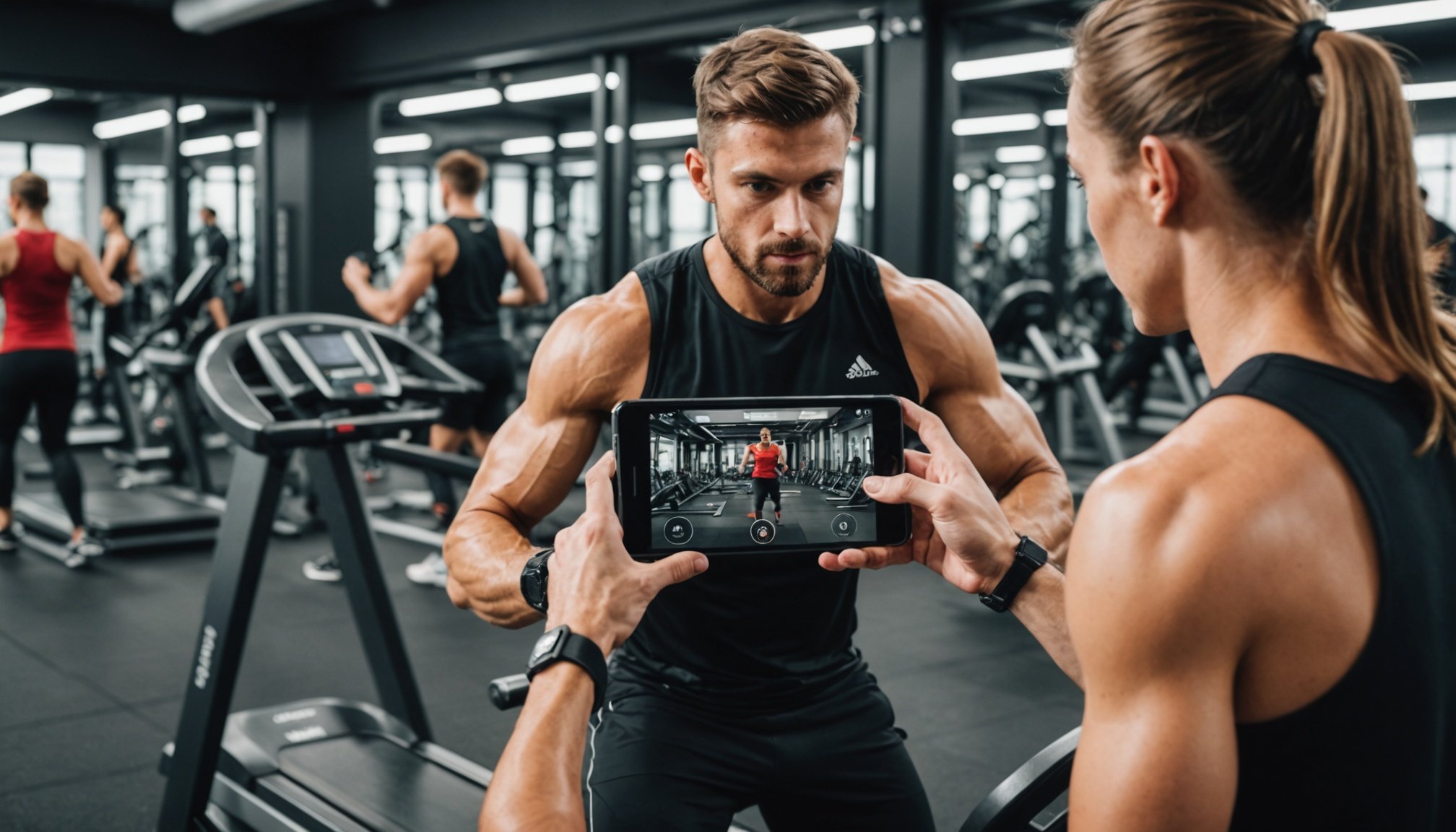The Role of Augmented Reality in Modern Gyms
Augmented Reality (AR) is revolutionizing the way we experience workouts, enhancing both motivation and efficiency. In gyms today, AR provides innovative tools that transform fitness routines. These technologies include smart mirrors that offer real-time feedback, holographic trainers assisting with correct form, and virtual trackers monitoring performance metrics.
AR encourages user engagement by making workouts more interactive and entertaining, a stark contrast to traditional gym settings. For example, gamified AR experiences transform exercises into adventurous tasks, increasing user enjoyment and sustained fitness participation.
This might interest you : Unlocking Community Potential: Innovative Digital Literacy Strategies for UK Libraries to Enhance Engagement
Comparing AR-integrated equipment with traditional gym machines reveals significant differences. While conventional devices may provide basic workout stats, AR tools offer immersive experiences that personalize exercises based on real-time data. Users gain comprehensive insights into their progress, fostering a sense of achievement and motivation to surpass fitness goals.
Ultimately, AR technologies stand as a testament to the innovation sweeping through modern gyms. By improving the user experience, AR ensures workouts are not just routine, but exhilarating adventures, keeping fitness enthusiasts coming back for more. As AR continues to evolve, its role will likely expand, further embedding itself as a staple in gyms worldwide.
Additional reading : Navigating Challenges: Crucial Hurdles in Adopting AI within UK Schools
Benefits of Augmented Reality for Workout Engagement
Augmented Reality (AR) redefines how workout engagement unfolds by integrating technology and physical activity in exciting ways. One key benefit is the boost in motivation through gamification. AR applications turn exercises into interactive games, rewarding users with progress badges and virtual prizes. This playful experience not only piques interest but helps maintain enthusiasm, encouraging regular participation.
Another advantage lies in the personalization of workout experiences. With real-time data tracking, AR tools can tailor exercises to match individual fitness levels, accommodating both beginners and seasoned athletes. This customization ensures that workouts remain challenging yet achievable, fostering a sense of achievement and progress.
Moreover, AR enhances workout engagement by providing measurable progress tracking and feedback. Users can monitor their performance almost instantaneously, understanding areas that need improvement or adjustment. This feedback loop is invaluable, allowing individuals to set realistic goals while tracking their journey in a visually engaging manner.
Thus, the combination of these AR workout benefits—motivation, personalization, and feedback—creates a user-centric ecosystem that revolutionizes engagement, propelling fitness enthusiasts toward their goals with enthusiasm and informed guidance. The future of fitness is not only about physical improvement but also about creating memorable experiences.
Case Studies: Successful AR Implementations in Fitness
Augmented Reality (AR) continues to make ripples in modern gym technologies, with notable success seen through varied implementations. Let’s delve into three successful case studies where AR fitness innovations have considerably enhanced workout experiences.
Case Study 1: Gym A’s Integration of AR Training
Gym A introduced AR training modules, revolutionizing personal workout sessions. Members benefited from holographic trainers offering real-time feedback and guidance. The innovation led to increased user satisfaction, especially for beginners who valued the immediate corrections and support. Positive outcomes included a rise in member retention, attesting to AR’s engaging impact.
Case Study 2: Gym B’s Use of AR for Group Classes
Gym B adopted AR for group classes, augmenting traditional workouts with virtual elements. Participants experienced enriched sessions with interactive visuals and tutorials. Member feedback highlighted improved motivation and enjoyment. This approach transformed group dynamics, making classes more lively and appealing.
Case Study 3: Gym C’s AR Fitness Challenges
Gym C implemented AR fitness challenges, encouraging friendly competition among users. Utilizing AR, challenges adapted to individual fitness levels, maintaining excitement and accessibility. Members noted the motivating aspect of competing in visually dynamic environments. These successful innovations demonstrate AR’s capacity to transform conventional gym settings, offering unique and compelling fitness journeys.
Comparing AR Fitness Experiences to Traditional Methods
In comparing traditional fitness methods to AR-driven workouts, the distinctions largely hinge on user engagement and retention. While traditional gym settings often offer structured and consistent workouts, AR technologies introduce interactive elements that captivate users through immersive, gamified experiences. This often leads to significantly higher user retention rates, as workouts transform into engaging, adventurous tasks.
Consumer preferences are increasingly leaning towards AR engagement. Traditional workouts might lack the motivational boosts provided by AR, which offers real-time feedback, progress tracking, and personalized workout routines. Users tend to prefer the interactive and personalized nature of AR, marking a shift from static, routine exercises.
Long-term benefits of AR adoption in fitness practices become evident in terms of sustained user motivation and enhanced performance metrics. AR tools not only foster a sense of achievement but also continuously adapt to individual fitness levels. This adaptability helps ensure consistent progress and minimizes the risk of plateauing, a common issue with traditional methods. As AR continues to innovate, its potential to redefine workout experiences further solidifies its place in the modern fitness arena, offering dynamic alternatives to conventional practices.
The Future of Augmented Reality in the UK Fitness Landscape
Augmented Reality (AR) is poised to significantly shape the future of fitness across the UK. Predictions indicate rapid advancements, where AR technologies will seamlessly integrate into everyday workout routines, transforming how individuals approach fitness.
Predictions for AR Technology Advancements
The continuous evolution of AR is set to introduce innovative features that enhance workout personalization. Soon, gym-goers may experience even more interactive and tailored experiences, where AR tools adjust to real-time performance data to optimise each session. This evolution aims to boost user confidence and results.
Potential Market Growth and Emerging Trends
Market growth is expected as more gyms recognize the benefits of AR. The fitness industry is likely to see a surge in demand for AR-integrated equipment, driven by an increasing desire for engaging and motivational workouts. Emerging trends may include membership models offering exclusive AR-based classes, appealing to a tech-savvy clientele.
Influence on Gym Membership Models
These technological enhancements will likely redefine gym membership models, offering a mix of traditional and AR experiences. Members may select packages based on their interest in AR classes, catering to varied preferences. This evolution suggests a dynamic shift in fitness culture, embracing AR as a vital component.











